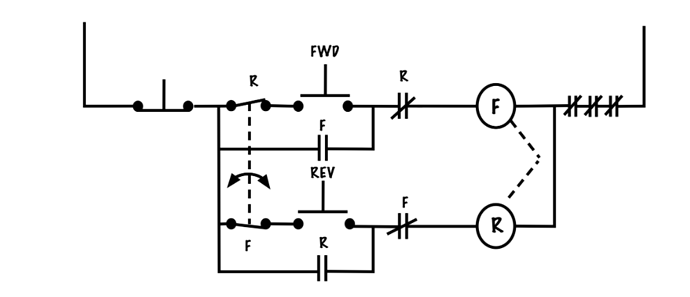If a forward-reverse circuit is not designed or rated to withstand the severe over currents and torques associated with sudden reversals in direction, a zero-speed switch wired normally closed can provide this function.
Once the zero-speed switch is attached to the shaft of the motor, its normally closed contacts are then wired in series with the opposite directions coil. In this manner, they act similar to the electrical interlocks but provide an extra delay function while the shaft of the motor still spins.
This means that even after the stop button has been pressed, the reverse coil cannot be engaged until the motor has stopped rotating in the forward direction, and vice-versa. Once the motor has come to a rest the zero-speed switch contacts will close and the motor can then be engaged in the opposite direction.
Reference
Basic Motor Control by Aaron Lee and Chad Flinn is used under a CC BY 4.0 Licence.
